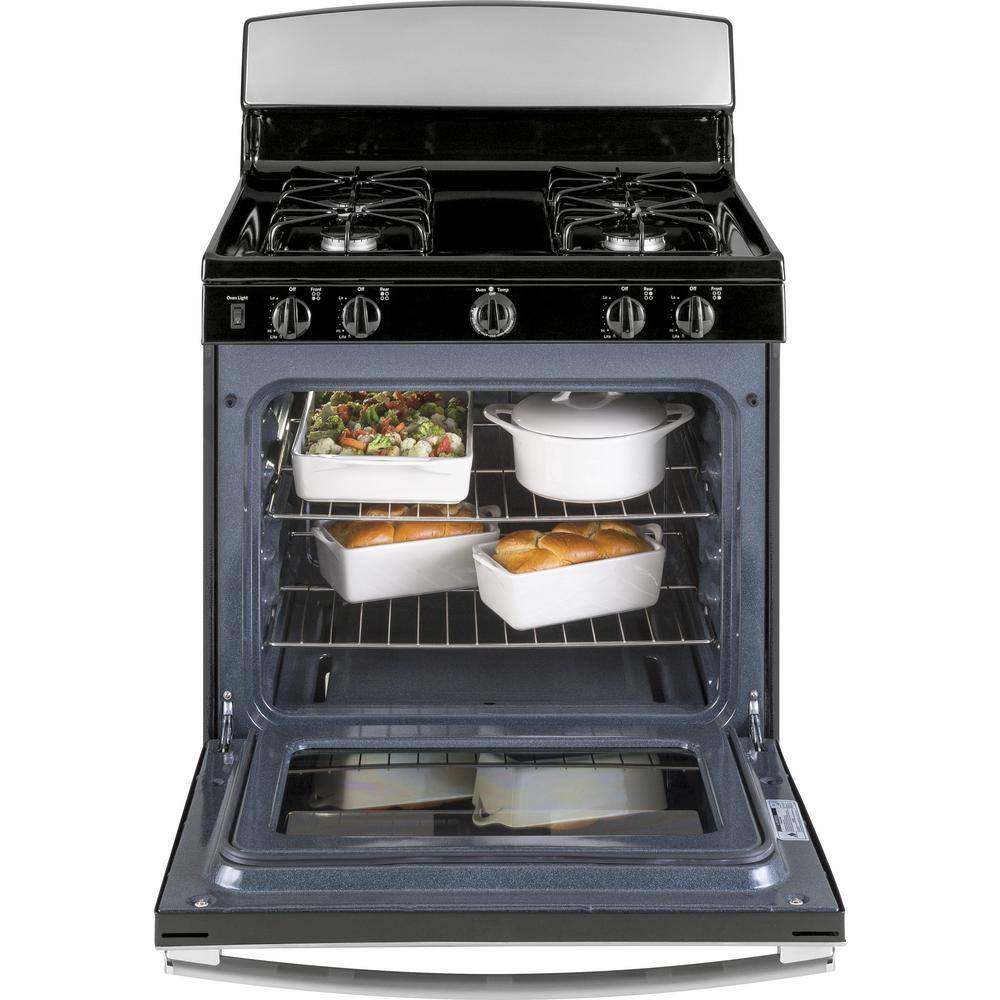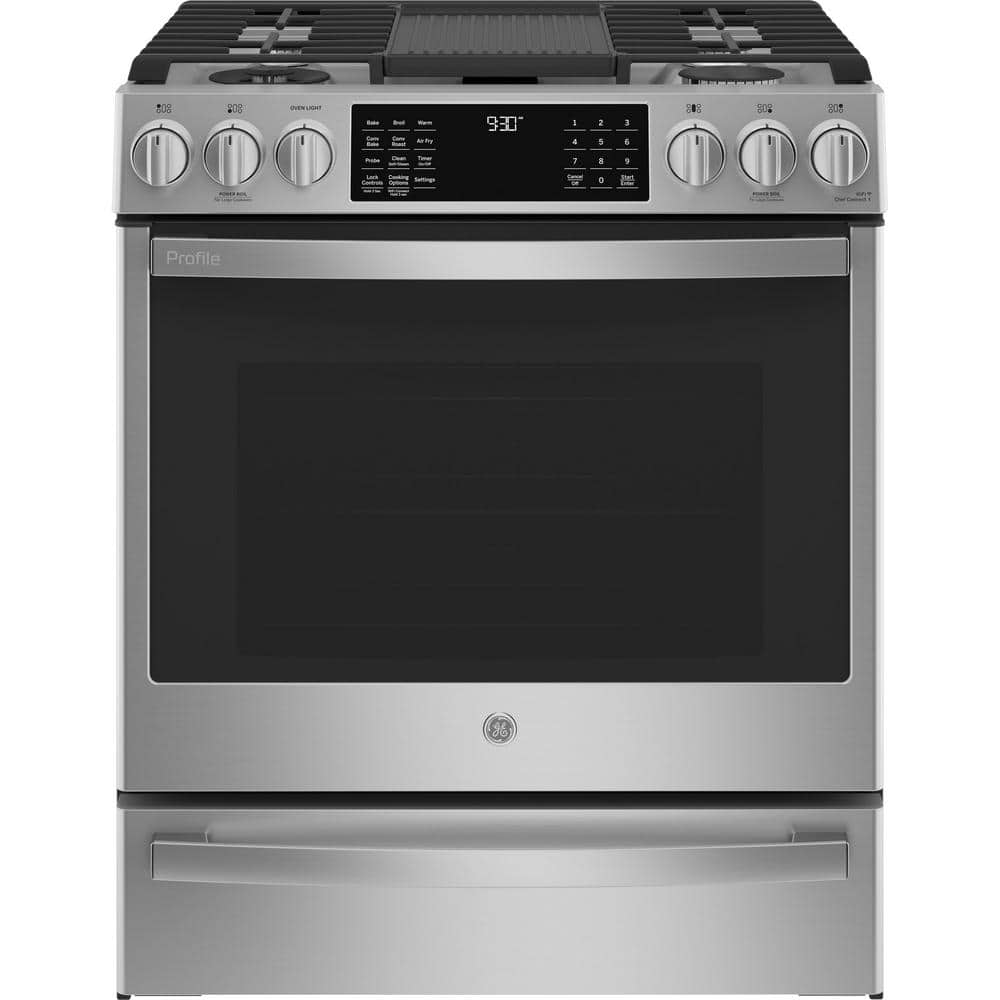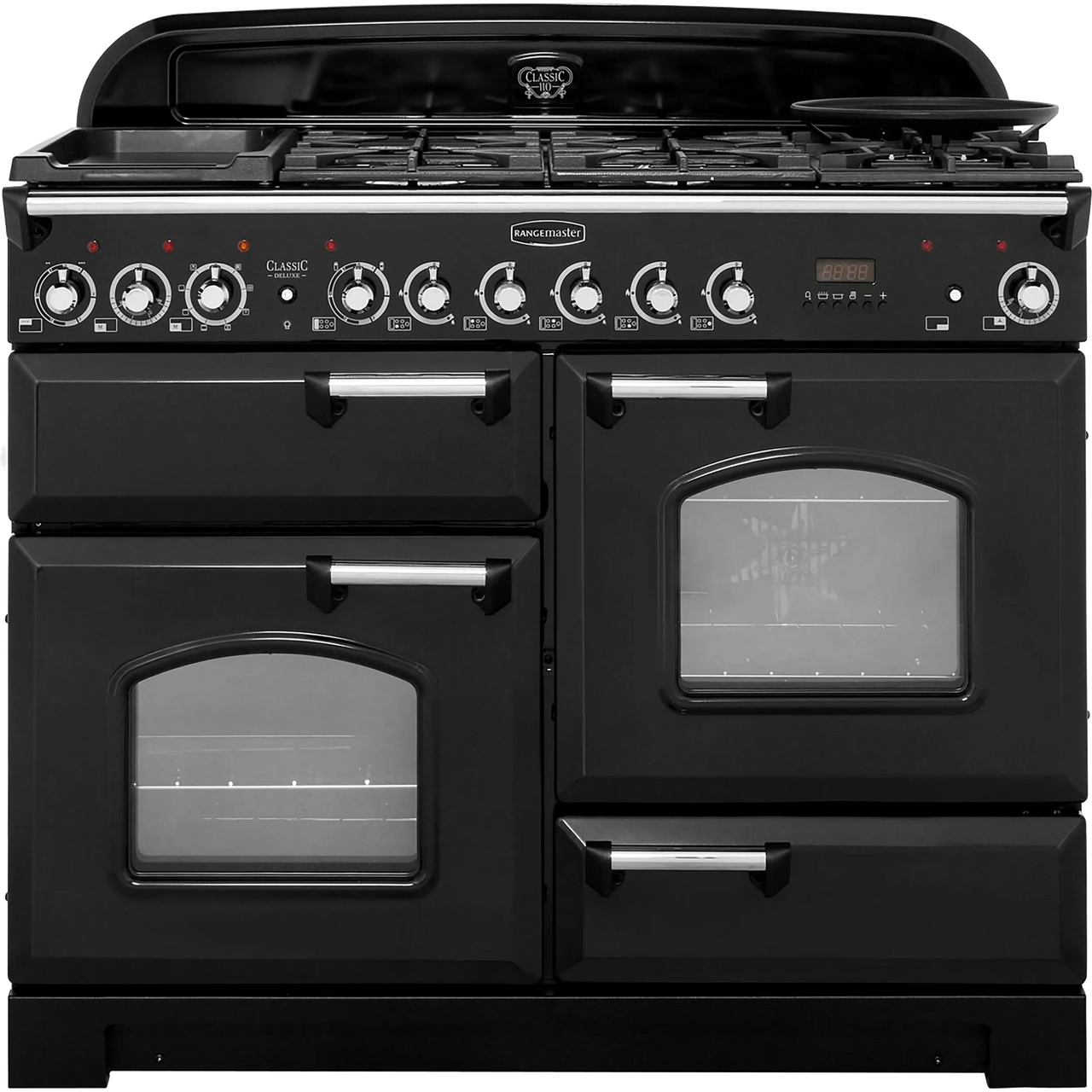GE 4.8 cu. ft. Gas Range in Stainless Steel
Sealed cooktop burners make clean-up quick and easy. Precise simmer burner for temperature control and even heat. Large oven allows enough space to cook an entire meal at once.
GE Appliances provide up-to-date technology and exceptional quality to simplify the way you live. With a timeless appearance, this family of appliances is ideal for your family. And, coming from one of the most trusted names in America, you know that this entire selection of appliances is as advanced as it is practical.
- 4.8 cu. ft. upper oven allows you to cook multiple dishes at once, perfect for large holiday gatherings and every day in between
- Black gloss steel grates – easily wipe away messes from a smooth, glossy surface
- Flexible broiling – use any sized pan under the broiler for maximum broil flexibility
- Analog knobs on the control panel are easy to operate with just a touch
- Oven window provides better visibility of the oven interior, allowing you to monitor cooking progress without opening the door, keeping oven temperatures steady and undisturbed
- 2-oven racks can be configured in 6 positions to accommodate a variety of baking needs
- Porcelain on steel square grates hold cookware securely over burners
- Porcelain upswept cooktop with raised edges contain spills, while the surface is easy to wipe clean
- Standard clean oven makes clean-up quick and easy – smooth surface makes cleaning by hand easier
- Limited 1-year warranty entire appliance
Additional information
| Depth With Door(s) Open 90 Degrees (In.) | 46.25 |
|---|---|
| Oven Interior Depth x Height xWidth (in) | 19 x 18.5 x 24 |
| Product Depth x Height xWidth (in) | 28.75 x 46.25 x 30 |
| Range Size (in.) | 30 |
| Certifications and Listings | UL Listed |
| Manufacturer Warranty | Limited 1-Year Warranty |






by Roland
Easy to assemble. Perfect fit for 30 inch opening. Top burners are different sizes. A small burner save gas when using a small pan.
by Alvaro
Delivery has fast and setup was great.
by Rhonda
Nice looking stove and easy to use.